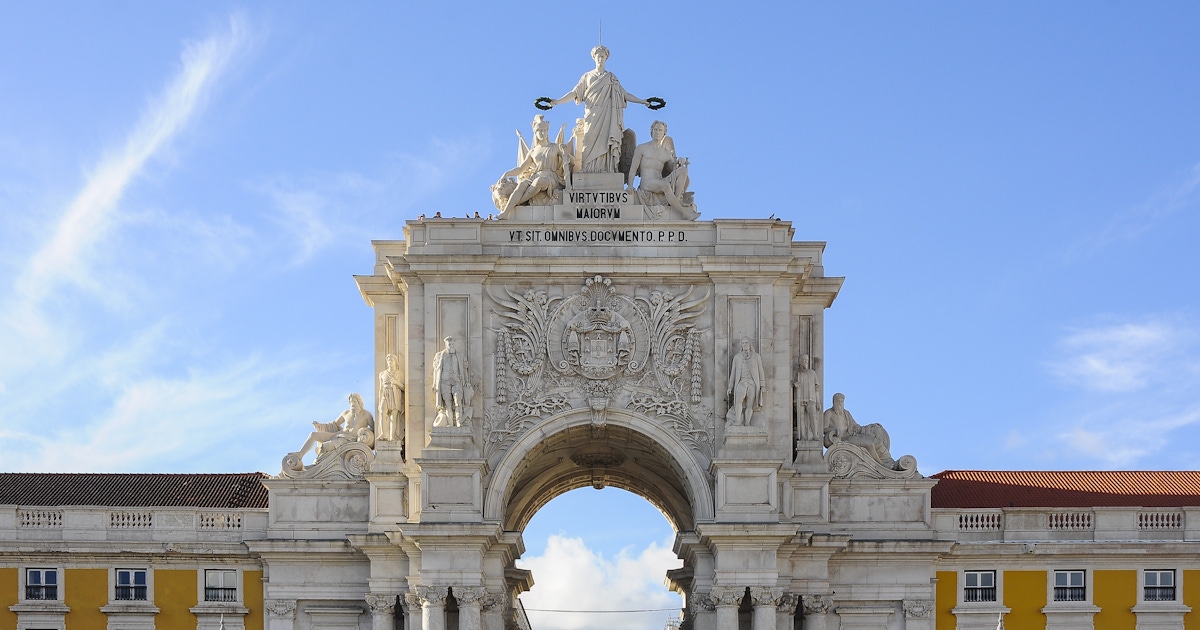Nestled in the vibrant heart of Lisbon, the Rua Augusta Arch stands as a magnificent symbol of the city’s rich history, architectural grandeur, and cultural significance. This awe-inspiring landmark, located at the end of Rua Augusta, is a testament to the enduring legacy of Portugal’s capital. As one of the city’s most recognizable structures, the Rua Augusta Arch beckons visitors to explore its fascinating past and experience the vibrant atmosphere of this bustling neighborhood.
A Glimpse into History:
The Rua Augusta Arch, also known as Arco da Rua Augusta in Portuguese, was built to commemorate the city’s reconstruction after the devastating 1755 earthquake. Designed by the Portuguese architect Santos de Carvalho, construction of the arch began in 1755 and was completed in 1873. The arch replaced an earlier medieval gateway that once served as the main entrance to the city.
Architectural Splendor:
Rising proudly in the iconic Praça do Comércio, the Rua Augusta Arch embodies an exquisite blend of architectural styles. The neoclassical design reflects the prevailing aesthetic of the time, with its triumphal arch structure, intricate sculptural details, and imposing Corinthian columns. The arch stands as a symbol of Lisbon’s resilience and the city’s rebirth following the earthquake.
Intricate Sculptures and Symbolism:
A closer look at the Rua Augusta Arch reveals an array of intricate sculptures that narrate historical and mythological tales. At the top of the arch, the statue of Glory, holding a laurel wreath and a trumpet, celebrates the achievements and aspirations of the Portuguese people. Flanking the arch are allegorical figures representing the cities of Lisbon and Porto, accompanied by sculptures depicting famous Portuguese historical figures such as Vasco da Gama and the Marquis of Pombal.
Panoramic Views and Elevator:
While the Rua Augusta Arch itself is a remarkable sight, the rewards of ascending to its upper level are truly breathtaking. An elevator ride takes visitors to the top, where they can indulge in panoramic views of the city, including the majestic Tagus River and the bustling streets of Lisbon’s historic downtown. The observation deck offers a unique perspective on Lisbon’s iconic landmarks, such as the São Jorge Castle and the 25 de Abril Bridge.
The Gateway to Lisbon’s Soul:
Beyond its architectural beauty, the Rua Augusta Arch serves as a gateway to the soul of Lisbon. As visitors pass beneath its towering arches, they are welcomed into a vibrant and bustling neighborhood. Rua Augusta itself is a vibrant pedestrian street brimming with shops, cafés, and restaurants, offering a delightful blend of traditional and contemporary Portuguese culture. This area is a hub of activity, attracting tourists and locals alike, who come to experience the lively atmosphere and explore the surrounding historic quarters of Baixa, Chiado, and Alfama.
Conclusion:
The Rua Augusta Arch stands as an enduring testament to Lisbon’s rich history, architectural prowess, and vibrant culture. With its magnificent design, intricate sculptures, and breathtaking views, the arch beckons visitors to embark on a journey through time and immerse themselves in the spirit of this remarkable city. A visit to the Rua Augusta Arch is not only an opportunity to admire a stunning architectural masterpiece but also to delve into the heart of Lisbon’s past and present, experiencing the essence of a city that effortlessly blends tradition and modernity.











